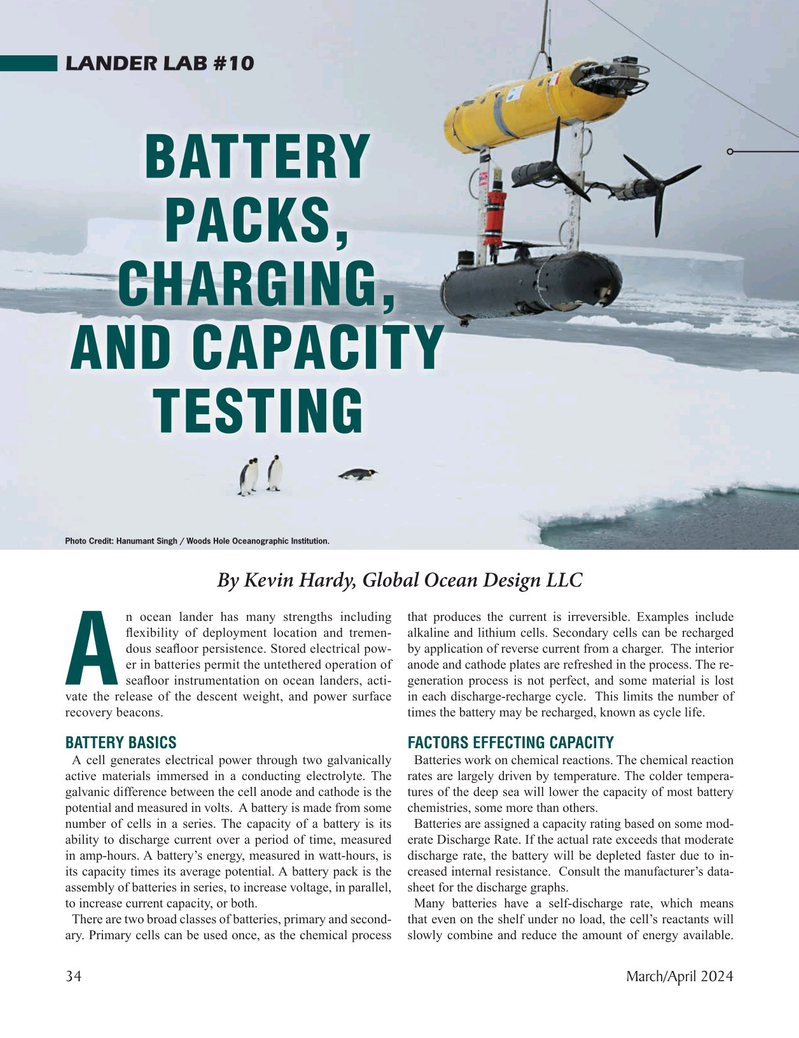
Page 34: of Marine Technology Magazine (March 2024)
Read this page in Pdf, Flash or Html5 edition of March 2024 Marine Technology Magazine
LANDER LAB #10
BATTERY
PACKS,
CHARGING,
AND CAPACITY
TESTING
Photo Credit: Hanumant Singh / Woods Hole Oceanographic Institution.
By Kevin Hardy, Global Ocean Design LLC n ocean lander has many strengths including that produces the current is irreversible. Examples include ? exibility of deployment location and tremen- alkaline and lithium cells. Secondary cells can be recharged dous sea? oor persistence. Stored electrical pow- by application of reverse current from a charger. The interior er in batteries permit the untethered operation of anode and cathode plates are refreshed in the process. The re-
A sea? oor instrumentation on ocean landers, acti- generation process is not perfect, and some material is lost vate the release of the descent weight, and power surface in each discharge-recharge cycle. This limits the number of recovery beacons. times the battery may be recharged, known as cycle life.
BATTERY BASICS FACTORS EFFECTING CAPACITY
A cell generates electrical power through two galvanically Batteries work on chemical reactions. The chemical reaction active materials immersed in a conducting electrolyte. The rates are largely driven by temperature. The colder tempera- galvanic difference between the cell anode and cathode is the tures of the deep sea will lower the capacity of most battery potential and measured in volts. A battery is made from some chemistries, some more than others. number of cells in a series. The capacity of a battery is its Batteries are assigned a capacity rating based on some mod- ability to discharge current over a period of time, measured erate Discharge Rate. If the actual rate exceeds that moderate in amp-hours. A battery’s energy, measured in watt-hours, is discharge rate, the battery will be depleted faster due to in- its capacity times its average potential. A battery pack is the creased internal resistance. Consult the manufacturer’s data- assembly of batteries in series, to increase voltage, in parallel, sheet for the discharge graphs.
to increase current capacity, or both. Many batteries have a self-discharge rate, which means
There are two broad classes of batteries, primary and second- that even on the shelf under no load, the cell’s reactants will ary. Primary cells can be used once, as the chemical process slowly combine and reduce the amount of energy available. 34 March/April 2024
MTR #3 (34-47).indd 34 4/4/2024 8:37:34 AM

 33
33

 35
35
